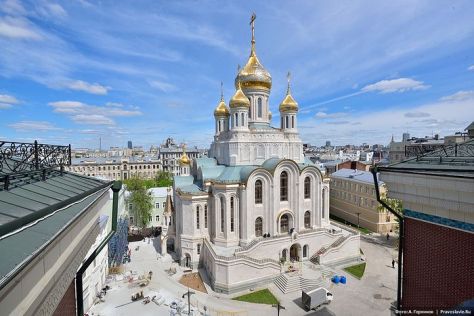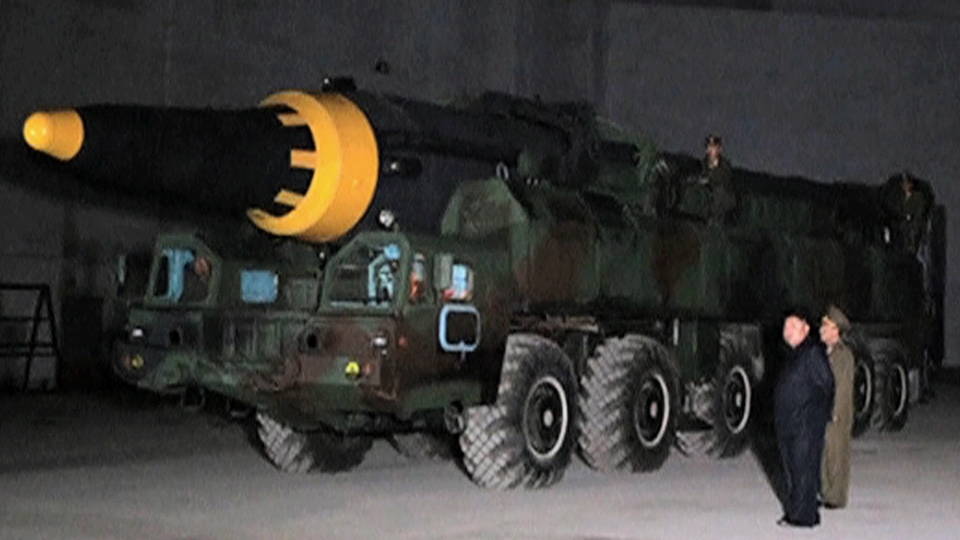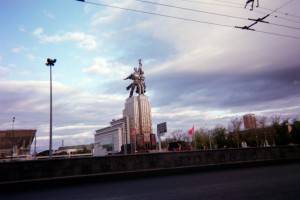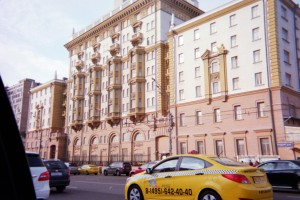
With the recent exposure of the Pentagon scheme in which weapons are being funneled from Eastern Europe to Syria, using a falsified paper trail, it is obvious that Washington is still keen on trying to achieve a partition of Syria as a Plan B to its failed regime change policy by backing various opponents of the Syrian government, namely the Kurds. It is therefore unsurprising, although still disturbing, that the Russian Foreign Ministry has released satellite footage from Eastern Syria that appears to show the U.S. military cooperating with jihadist groups like ISIS. A transcript from the Ministry of Defense, which was released along with the video, reads:
#US Special Operations Forces (#SOF) units enable US-backed Syrian Democratic Forces (#SDF) units to smoothly advance through the ISIS formations.
Facing no resistance of the ISIS militants, the #SDF units are advancing along the left shore of the #Euphrates towards #Deir_ez_Zor.
The aerial photos made on September 8-12 over the ISIS locations recorded a large number of American #Hummer vehicles, which are in service with the #America‘s #SOF.
Go to Russia Insider’s write-up to view the video and images. An excerpt from their article follows:
The shots clearly show the US SOF units located at strongholds that had been equipped by the ISIS terrorists. Though there is no evidence of assault, struggle or any US-led coalition airstrikes to drive out the militants.
Despite that the US strongholds being located in the ISIS areas, no screening patrol has been organized at them. This suggests that the#US_troops feel safe in terrorist controlled regions.
Analyst Tom Luongo discusses other disturbing events in Syria that seem to portend Washington continuing its failed strategy of backing nefarious elements in Syria to achieve a partition – to which Putin will continue to successfully counter in his Judo-esque manner:
The sides are now very clear. They were always clear to the astute. They are now fully out in the open with this week’s events.
It is the U.S./Israel/Saudi Arabia versus Russia/China/Iran with the EU and Turkey trying to change sides while still receiving NATO money.
On Tuesday, an attack on a Russian military police position by Jabhat al-Nusra (Al Qaeda in Syria) was repulsed by Russian Spetznaz and close air support forces.
….What’s important here is that the Russians believe the U.S. was behind the attack, which was no small thing. It was designed to sow chaos in Idlib and stop the advance of the Syrian Army and its allies (Russia, Iran and Hezbollah) from crossing the Euphrates River.
….Now that there is clarity of the U.S.’s position through the re-consolidation of power by the Deep State, Putin will not hesitate to make bolder and bolder moves to cripple U.S. ambitions in the region. It means that clashes like these are going to continue to happen with increasing frequency and severity.
Read his full analysis here
Mike Whitney also has a compelling analysis out about how this is potentially the most dangerous moment of the Syrian war as Putin will be forced to consider how much he will concede in order to placate Washington and avoid a serious confrontation as the two nuclear superpowers find themselves “cheek to jowl” in the same area of Syria. Washington seeks to keep a foothold through an oil-backed Kurdistan and Russia supports the SAA in re-taking the most critical parts of the nation.
This blog will, of course, continue to follow events in Syria.
**************************************************************************
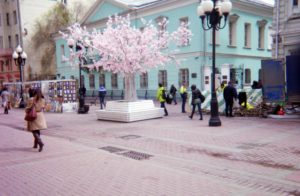
Russia is still on a gradual but positive trajectory out of its recession. First, it was just announced that Russia’s grain harvest will again break records and will likely keep the country in its position as the number one exporter of grains. Of course, this is also good for Russia’s domestic food security.
Second, BNE Intellinews has reported that retail sales are up, along with wages, and unemployment has fallen below 5% for the first time since 2014 – although it never reached over 6% through the recession.
**************************************************************************
PBS has been broadcasting a much ballyhooed multi-part special by Ken Burns called “The Vietnam War.” I have not had a chance to watch the series yet, but based on what I do know about the war and the critiques of trusted journalists and analysts, it sounds like it’s a whitewash that will likely not encourage Americans to meaningfully ponder its imperialist militarism or the profound consequences of its actions in Vietnam on several million Vietnamese in addition to the scarring of the land and continual suffering from illicit weapons used on that nation.
Chuck O’Connell, professor of sociology at UCI, has great critique up at Counterpunch:
After watching Episodes One and Two of the Burns and Novick Vietnam War series, I am reminded of the old adage asserting a valuable point for students of history: the class that controls the means of material production controls also the means of mental production. Listening to the narrator scroll through the list of financial sponsors cautioned me to lower my expectations that the series would break away from the predictable liberal narrative that has been dominant in discussions about the Vietnam War.
What is that liberal narrative? It is a bundle of intertwined claims: Vietnamese opposition to the French and then the Americans was motivated by a nationalist desire for independence, the Saigon government of the South was a legitimate government, the rebellion of the National Liberation Front in South Vietnam against the U.S. supported Saigon regime was directed by the communist Hanoi government of the north, the military conflict in Vietnam was thus a civil war, and U.S. military involvement in support of the South was the result of a series of mistakes by American political leaders. It’s a narrative that has a certain plausibility not least because it has been repeated over and over for fifty years.
A more comprehensive scholarly reading of history produces a more accurate narrative: First, without discounting the significance of nationalism in Vietnamese society, a more important factor in the war was the goal of land reform offered by the communists to the peasants who comprised the majority of the population. The military struggle was in large part a social revolution against the landlord class and its foreign backers. Second, the Saigon regime that emerged after the failed French war of re-conquest was a U.S. creation financed and managed by the Americans who built its military and prodded it into fighting against the Vietnamese revolutionary forces. When an army such as the South Vietnamese Army is funded and trained by a foreign power to maintain the foreigner’s domination of that same country, that army is not fighting a civil war – it is fighting a war of counterinsurgency and is essentially an army of collaborators. Third, the National Liberation Front was an autonomous Southern political entity that emerged from the failure of the Hanoi government to press a fight against the southern regime of Ngo Dinh Diem. Dominated by communists it was in liaison with Hanoi as the North gradually gave greater assistance to the rebels’ efforts. Fourth, the U.S. involvement was not the result of a series of mistakes but was the result of a series of deceptions and provocations made by every U.S. administration running from Harry Truman all the way to Richard Nixon on the basis of the perceived political-economic imperatives of advanced capitalism in Southeast Asia. Let me amplify these points.
Read the full article here
Next is John Pilger’s critique. As regular readers of this blog may recall, Pilger is one of my journalistic heroes. He was an on-the-ground journalist (and truth-teller) in Vietnam and, along with his photographer, was the first western journalist to report on the Khmer Rouge atrocities in Cambodia. He has been reporting on the ground in various conflicts and speaking truth to power for decades, from Southeast Asia to the Middle East and elsewhere.
Pilger’s critique can be found at Consortium News. An excerpt follows:
In a society often bereft of historical memory and in thrall to the propaganda of its “exceptionalism,” Burns’s “entirely new” Vietnam War is presented as an “epic, historic work.” Its lavish advertising campaign promotes its biggest backer, Bank of America, which in 1971 was burned down by students in Santa Barbara, California, as a symbol of the hated war in Vietnam.
Burns says he is grateful to “the entire Bank of America family” which “has long supported our country’s veterans.” Bank of America was a corporate prop to an invasion that killed perhaps as many as four million Vietnamese and ravaged and poisoned a once bountiful land. More than 58,000 American soldiers were killed, and around the same number are estimated to have taken their own lives.
I watched the first episode in New York. It leaves you in no doubt of its intentions right from the start. The narrator says the war “was begun in good faith by decent people out of fateful misunderstandings, American overconfidence and Cold War misunderstandings.”
The dishonesty of this statement is not surprising. The cynical fabrication of “false flags” that led to the invasion of Vietnam is a matter of record – the Gulf of Tonkin “incident” in 1964, which Burns promotes as true, was just one. The lies litter a multitude of official documents, notably the Pentagon Papers, which the great whistleblower Daniel Ellsberg released in 1971.
There was no good faith. The faith was rotten and cancerous. For me – as it must be for many Americans – it is difficult to watch the film’s jumble of “red peril” maps, unexplained interviewees, ineptly cut archive and maudlin American battlefield sequences. In the series’ press release in Britain — the BBC will show it — there is no mention of Vietnamese dead, only Americans.
Read Pilger’s full article here
**************************************************************************
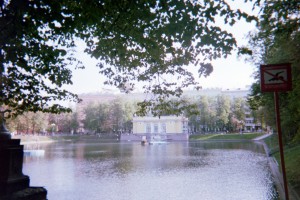
It’s always nice to end a blog post on a positive note. According to Sputnik News, a delegation of state senators from New York recently visited Moscow and found much to admire and even emulate in the Russian capital:
MOSCOW (Sputnik) – The delegation of New York state senators, which is currently visiting Moscow, is impressed by the city’s way of governance and wants to implement some of its innovative decisions for running of New York City, member of delegation Diane Savino told Sputnik on Thursday ahead of a meeting at the Civic Chamber of the Russian Federation in Moscow.
“We were really quite surprised to see how well the city of Moscow is run … So we are hoping that we can learn some stuff and bring it back to NYC and maybe implement some of really smart stuff that they have done here in the past few years,” Savino said.
….Last year, Moscow was included on the list of the world’s best cities, according to a survey by PriceWaterhouseCoopers (PwC) and BAV Consulting companies. The key metrics for the survey comprised the levels of influence in terms of politics, economics, infrastructure, innovation, culture, entertainment, as well as the access to public education, public health and other points.


